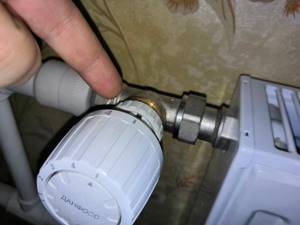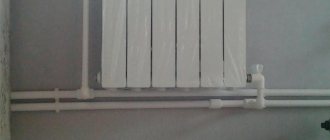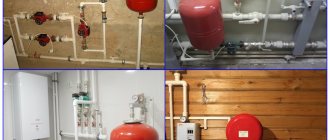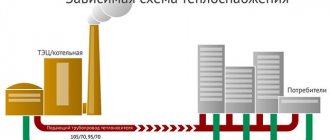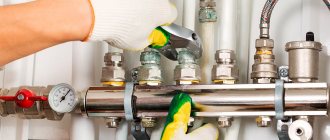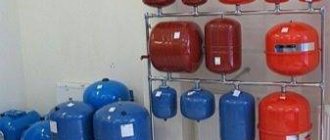In this useful video from the company “Astrakhan. Climate World” provides some tips that will help you avoid mistakes when installing heating in a private house under construction if you decide to do the project yourself. We have been engaged in heating, ventilation and air conditioning in private homes for more than 9 years. If you are planning to build your own home and need a heating system, a few important rules will help save your nerves, time and money.
So, 3 tips on how to guarantee a warm and safe home.
Mistake No. 1. Order a house project without taking into account the heating system
A client contacted the company with a beautiful 3D home design. At first glance, it became clear that it would be cold inside. The number of heating devices was taken into account, but as decorative elements without the corresponding calculations. This means it will be uncomfortable to live in the house. The result is that the client got the money and went to redo the design. So, the first piece of advice is to coordinate the design of your home with an experienced heating engineer.
Mistake #2. Take a heating project from friends or on the Internet
Many people use a ready-made home design project received from friends or downloaded on the Internet. Seems like an ideal option? A friend's house is already standing. And it’s warm, cozy... You take it for free. You don’t have to pay anyone any money or download a ready-made one from the Internet. Recommended to you on the forum. What's the catch? Often such projects are created with gross errors in heating systems or according to standards that are already outdated 2-. For example, requirements for gas boiler houses change once a year or even more often. If you build a house according to this project, you may have to move walls, cut windows and redo ventilation. And this greatly increases the cost of the entire house! But this can be avoided! Just make the right call to an experienced heating specialist.
Mistake #3. Buy equipment on the advice of the seller
Typical situation. The client comes to the store and on-site consultants calculate the quantity and capacity of the equipment. A person buys it, brings it home and it turns out that everything he bought is much more powerful than necessary. Accordingly, he overpaid!
Or another situation. The power may not be enough and in severe frosts your house will freeze, and then the whole family will have to look for another place to live. This happens because the walls, ceiling and floor are made of different materials that have different thermal conductivities, and this all affects the selection of appropriate heating equipment. Advice: be sure to first calculate the heating and the project, and then buy the equipment in the store. The growth of such gross errors among the population is very worrying. This video covers only the three most popular mistakes. In fact, there are a lot of nuances in heating, so contact experienced specialists so that they can advise you on any issue and so that you can definitely build your home warm and cozy!
It is necessary to avoid mistakes when installing a heating boiler.
Mistake No. 1. Dirt and slag
A little background. Recently, the owner of a production facility contacted our company's service department. He voiced the problem: the boiler was not working, and it was unclear why. We carefully examined the equipment and found the cause - the boiler heat exchanger was clogged. A trifle, it would seem, but the heating was still there. And that's why.
When a heating system is being installed, shavings and various mechanical impurities may remain inside the pipeline during operation. When hot water begins to circulate, it all usually settles in the boiler heat exchanger. Gradually, slowly, but sooner or later, the heat exchanger may become clogged, which will inevitably lead to the boiler stopping.
The photo shows a bithermal heat exchanger (works for heating and hot water supply), which is clogged.
If this happens, you will spend about a third of the cost of the boiler itself. In this case, we are talking about an amount of five thousand or more thousand rubles. But that's not all. A blockage is a harmful thing. The pump may fail, and then prepare another four thousand or more. Or the three-way valve of the wall-mounted boiler will jam. This is another three thousand rubles or more.
How to avoid mistakes. Be sure to contact us once a year to flush and clean the heating system of your home. Remember: a layer of deposits just one millimeter thick reduces heat transfer by about 10%, which immediately affects the overall energy efficiency of the heating system and energy consumption. The overgrowing of heating system pipelines with scale and deposits leads to a drop in temperature in heated rooms.
Selecting a radiator in a store, 1 section per 1 m2
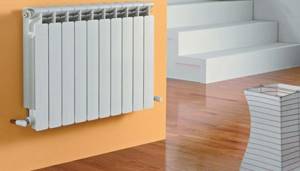
Another common heating error. The power of the radiator purchased must strictly correspond to the volume of the area of the heated room. Experienced specialists recommend calculating the required number of sections for each room, and not for the entire apartment in total. Otherwise, there may be a need to add additional sections or install another radiator.
Mistake #2: Working with inexperienced people
Another story from the practice of Climate World. We have one client who bought a boiler from our company some time ago. Please note: we have the boiler, but completely different people installed it and the entire heating system as a whole. This citizen came to us and complained: it’s cold in the house. He had a hard time in the winter: even warm socks and pants didn’t help, and some family members got sick. It was not comfortable to sleep.
Since every client is valuable to us, we decided to look into it. During the examination, it turned out that the client, in order to save money, hired heating equipment for installation. a familiar plumber. Please note: not a professional in the field of installation of heating systems, but a person with a completely different specialization. He came and, as best he could, assembled a heating system at the rate of 1 section per 2 sq.m.
For the house in which the client lives, and he has a fairly spacious cottage, this turned out to be extremely insufficient. Accordingly, the heating system simply could not cope with the load and could not provide a comfortable atmosphere. This was especially noticeable when the temperature outside dropped below 15 degrees Celsius.
How to avoid mistakes. It is necessary to do thermal engineering calculations and projects in specialized companies that have been involved in the installation and maintenance of heating systems for more than seven years and have sufficient experience.
2-Pipe selection
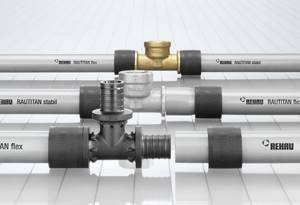
The pipes must be the same diameter. Otherwise, hydraulic losses begin to increase due to the fact that the pressure at the joints will differ. An error will occur in the functioning of the heating system.
Important!
When choosing pipes, you need to pay attention to the reinforcing layer. If it is missing, then the line will not have enough rigidity to resist the influence of hot water.
Mistake No. 3. Without a coupling it’s impossible
When installing thermal systems, such an important part as a dielectric coupling is used. Some people think that this is a trifle, and it is not at all necessary to install it. Thank God, we have no examples of what can happen without this coupling. But the consequences can be the saddest. And that's why.
A dielectric coupling is a device that prevents the spread of so-called leakage currents (stray currents) through gas pipelines. It not only eliminates possible heating and sparking of the liner in the event of accumulation of electrical potential, but also protects the electronics and internal electrical circuits of gas appliances and meters from failure due to exposure to harmful stray currents.
Modern gas and electric boilers consume electricity. There are stray currents in electrical networks. They arise in the ground when it is used as a conductive medium. They cause corrosion of metal objects that are completely or partially underground, and sometimes only in contact with its surface. In some cases, this is a consequence of an emergency leak from power lines.
Now imagine that stray currents suddenly appear in your home. For example, a neighbor down the street began to steal electricity and hid the wires underground. Or a strong thunderstorm has begun, during which stray currents arise. All this can lead to a number of consequences. For example, if you touch the boiler, you will get an electric shock. Not fatal, of course, but very unpleasant.
Mistake No. 4. It will do without service!
Let's look again at the rich history of our company. Once upon a time there lived a businessman. I bought a boiler in Moscow. Brought it, installed it. And I would live happily ever after, yes. There were problems with the equipment. The businessman began calling all the companies, but no one could help him. Even we, with our extensive engineering and technical capabilities.
Why? It's simple: out of a desire to save money, a businessman bought something that no one in the Astrakhan region can repair. Even with all the desire. And you won’t be able to find spare parts for it during the day. The businessman had to spend money, take the boiler to the capital, so that under a guarantee they would exchange it for another - more common one. Nobody knows how much money was lost on this. But, as you can guess, they could buy two boilers.
How to avoid mistakes. Purchase boilers only from specialized companies that install and service the purchased equipment. This is necessary so that there is someone to ask. And also be able to temporarily replace it with similar equipment.
Mistake No. 5. Some people have the boiler, others have the service.
Another story. One man bought a boiler at a large hardware store. Since stores (especially large chain stores) almost never service the equipment sold, the sellers referred the buyer to a service center. There, an agreement was concluded with a citizen for boiler maintenance.
But the man did not rejoice in the warmth of his home for long. A couple of months later the boiler broke down safely. At the service center, since the warranty had not expired, they said: “OK, we’ll fix it. No problem. Just wait three weeks until the spare parts arrive, until we do the work.”
And what should a person do for almost a month? Warm up with the breath of your own body? Or maybe make the whole house use heaters? No electrical network can handle this. But I had to wait and suffer. At the same time, understand a simple truth: servicing should be carried out by the person who sold the equipment. Then there is more responsibility and quality.
But let's return to large stores. The secret of their work is simple: in order to expand the circle of customers as much as possible, they sell many brands of boilers from different brands and manufacturers. Servicing is provided to service centers. And they are always stuck: there are many different boilers, there are also clients, but there are not enough of their own employees. There are few spare parts. So you have to answer: “Come to us this way.” month".
How to avoid mistakes. Purchase boilers only from specialized companies that select, install and service the purchased equipment. This is convenient for clients because they have someone to ask questions about. Also, when concluding a contract, look at the item “Boiler during repairs”. At the same time, you can always count on the fact that they will provide you with a boiler while yours is being repaired.
5-Selection of circulation pump
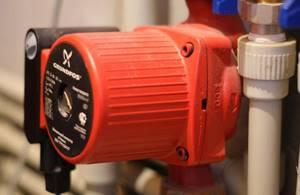
There are programs that allow you to calculate hydraulics. The resistance that pipes and various devices provide is determined, and it is demonstrated how much the pressure can drop under the influence of a particular pump.
Then you can select a pump. Its pressure must overcome the created resistance. If the pump pressure is not enough for resistance, then the heating system will malfunction.
Note!
When selecting a pump, it is also important to pay attention to what noise it will make, what size it reaches, what are the features of its maintenance, etc.
Mistake #6. Installer on trust
Some time ago, a person contacted Climate World with a request to complete the heating system in a cottage. Having arranged a meeting, he drove up to our office and told the following story.
A few months ago a man set himself a task: to build himself a house. The cold weather was approaching, so I wanted to quickly install heating and move under a new roof. Without thinking for long, the citizen took a newspaper of free advertisements, found an installer, and outlined his wishes. We agreed on a price and shook hands. We went to the store and bought the necessary materials.
A couple of days after the start of work, the installer asked for an advance payment. Having received the money. disappeared. Didn't answer calls. Having abandoned the search for the fraudster for a while, the customer finally did the right thing: he called Climate World and asked to complete the project. Arriving at his cottage, we found an “oil painting”: materials worth several hundred thousand rubles lay throughout the house. Many soldered pipes were sticking out of the wall, the boiler lay unopened. Showing all this, the homeowner was furious and did not know what to do. The unfortunate installer, of course, did not leave any diagrams or drawings.
We got to work. But first, in order to take into account the client’s wishes, we decided to develop a project that would make maximum use of the purchased materials and what had been done before us. When everything was ready, we presented the client with drawings and calculations, which clearly showed what, where, and why each detail was needed.
The client asked a lot, we told and explained. As a result, we found the optimal solution and agreed on the cost and time of completion of the work. And after two weeks the work was completed, the system was accepted for warranty. The man was satisfied and began finishing. Six months later I moved into a new warm house. We still do boiler maintenance and system adjustments for him once a year.
Now do you understand why the error occurred? Yes, because the customer did not enter into formal obligations in the form of an agreement. Only in words and with a stranger. The fact that the fraudster ran away after receiving an advance is not half the problem. But he could steal materials or install them in such a way that the heating system would fall apart or even cause a fire. Here the losses would amount to millions.
How to avoid mistakes. Do not choose installers based on advertisements. Always enter into a formal contract for work performed in specialized companies. Always. Make this a rule.
Mistake No. 7. Buying without a project
This error is directly related to the previous one. So you hired “Uncle Vasya”, then you wrote a list of equipment and materials that you need to buy. How did he do the calculation? On a piece of paper in one hand and an antediluvian calculator in the other? Most likely so. Does he have design and estimate documentation? Of course not.
The result may be this: the system is ready, even - amazingly! - works. But for some reason there were a lot of unclaimed materials left. One of our clients, who went through this thorny path, after installation, counted “surplus” of more than twenty thousand rubles. These are direct losses, by the way. You won’t be able to return it back to the store; you’ll be tortured to sell it.
All questions to “Uncle Vasya”, but that’s why bribes are smooth. Like, he did what he could. I took it, as expected, “with a reserve” that supposedly “doesn’t stretch my pocket.” When it comes to three boards for the floor, it’s no big deal - they’ll come in handy around the house. What will you do with the heating equipment? Keep it in reserve? A rhetorical question.
How to avoid mistakes. Purchase equipment and materials only from specialized companies that select, install and service the purchased equipment. This is convenient for you because you have someone to ask! Moreover, you can replace the equipment without any hassle. Judge for yourself: if a faucet breaks, is it more convenient for you to go pick it up yourself, buy a new one, or just call so they can come to you and replace it for free?
No. 8. The seller advised.
Okay, “Uncle Vasya.” They told him - he did it. But tell me, is it possible to buy equipment and materials from the words of the seller in the store?! If you come across a salesperson with a higher engineering education and experience in the industry, it’s a miracle! But, alas, you won’t find anything like this.
Unfortunately, some customers think this way: the seller works in this store, so he should know. The consequences could be the same as in the case of “installer Uncle Vasya.” At a minimum - a mountain of unusable materials, at a maximum - a completely non-working heating system. Example: a system is made from what is available. It happens that a pipe that is too thin is laid in places where a larger diameter is required and vice versa. This is cost overrun on purchase and operation.
Repeat to consolidate. Without the necessary calculations and reference to the plan, it is impossible to select the correct materials. It is profitable for the store to sell more goods, especially those that are in stock.
6-Selection of expansion tank
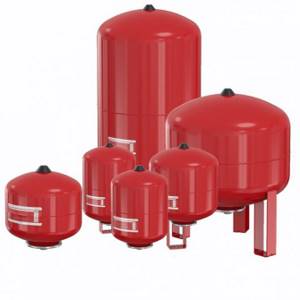
A tank is an element of the heating system, which is a container that can be used to compensate for the expansion of the liquid during heating. When selecting a tank, it is important to first carefully study each parameter of the system, otherwise there is a risk of making a significant mistake. It threatens a complete failure of the heating system.
The volume of the tank should be equal to 15% of the coolant. Therefore, when choosing, it is better to give preference to those models that are larger in volume than required. Large tank sizes do not affect the heating process in any way, while a lack of size results in problems.
Mistake No. 9. Diameter “by eye”
Imagine that you are a chef in a large dining room. But - even if it sounds paradoxical - before this they only cooked at home and the simplest dishes. How will you, for example, salt a large pot of soup? By eye, of course. The same goes for choosing the diameter of heating pipes. It cannot be done “by eye” under any circumstances: the entire system can be covered with a copper basin. But first, noise in the system, cold rooms with sufficient boiler power, and so on are guaranteed.
How to avoid mistakes. It is mandatory to do a hydraulic calculation before purchasing equipment and materials. It will allow solving a wide range of issues of ensuring compliance with the requirements for the heating system. In particular, select the correct pipe diameter in all sectors according to the recommended parameters, including determining: the coolant movement speed; optimal heat exchange in all areas and devices of the system, taking into account ensuring its economic feasibility.
1-Selection of boiler
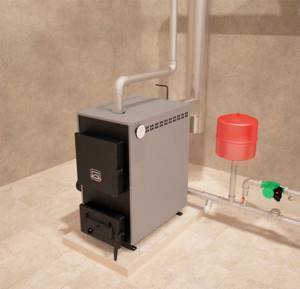
What causes the most trouble for a person is the wrong choice of heating boiler. Moreover, its selection is determined not only by the spaciousness of the apartment. If the boiler power is higher than required, the monthly costs for heating equipment will greatly increase. But it will be much worse if the boiler power is too small compared to what is needed. Then there will be a catastrophic lack of heating during the cold season.
It is important to study not only the boiler power, but also the efficiency. This indicator is as significant as the previous one.
Mistake No. 10. Cold behind thick walls
This is not even a mistake, but a customer pain that we have to deal with. Some people ask the question: “Why is it cold in the house, although the floors are heated in all rooms and the walls are “thick” and insulated?” There is a whole range of reasons.
Firstly, it is often not a matter of how “thick” the walls are. It also happens that even a meter thick brick is not enough to keep it warm and comfortable inside. After all, a lot depends on a competent, carefully calculated heating system. The same thing happens if the walls are “thick” and there is a “warm floor” system, but it doesn’t cope. Yes, because the heat transfer of “warm floors” is not infinite. It is limited by sanitary and technical requirements that must be strictly observed.
For example, do you know that heated floors cannot be used at temperatures exceeding 27-32 degrees Celsius? If this regime is violated, the pipes may swell from overheating, and this will lead to the destruction of the floor covering.
How to avoid mistakes. Order design and estimate documentation, as well as purchase equipment and materials for the “warm floor” system only from specialized companies that select, install and service the purchased equipment. This is convenient for you because you have someone to ask!
The most common mistake is choosing the wrong boiler power. Most often, this power is overestimated. In Belarus, people are used to taking everything with a reserve, but the analogy is with cars, where an increase in the number of horsepower is welcomed. Some focus on selecting equipment with priority for the system to operate on DHW. But with increased power, the heating system is not able to absorb excess heat. The boiler begins to cycle. It quickly heats up the coolant, turns off, and after the temperature drops by the set temperature difference, it turns on again - the process becomes cyclical with minimal deviations from the temperature difference.
In rooms with a small system volume (small-diameter polypropylene pipes, aluminum sections with a small volume of coolant, a limited number of sections themselves), even at the lowest pump speed, the coolant returns to the boiler very quickly. Many gas heat generators, especially wall-mounted ones, have the ability to modulate power - automatically change it from a certain minimum value to a maximum. This minimum is on average within 25-35% of the maximum value (it varies for different models).
Constantly turning on/off the device primarily affects its service life, and in addition, leads to excessive energy consumption. As a result, out of a declared, for example, ten-year service life, it will work for seven years at best.
Overestimation of power often occurs in apartment heating, when a 24 kW boiler is installed in a room of 50-70 m2. designed for a large heating system. The customer is satisfied with receiving 12 liters of hot water from such a boiler, and often also the low price, and they do not take other factors into account. In a private house, they also take it with a reserve “just in case”, for example, for 250 square meters, instead of a 24-kilowatt boiler, they install models with 28-32 kW.
In general, everything is individual, but exceeding power is not always justified. Before purchasing a boiler, it is necessary to carry out a thermal calculation of the entire building and for each room that has an external wall, heat loss through walls, windows, ceilings, floors and infiltration. The obtained values for each room are divided by its area and the specific heat loss is obtained (W/m2). These values are maximum for the rooms on the top floor, followed by the values for the first floor, and the minimum for the rooms on the intermediate floors. And only from the general figures for heat losses is the power of the boiler and radiators already selected.
Then the temperature mode of operation of the heating system is determined (high or low temperature), a hydraulic calculation is carried out, including the choice of pipe diameter and characteristics of the circulation pump, and the volume of the heating system is assessed regarding the need for an additional expansion tank. This is a quick guide to follow before you buy a boiler.
Examples of installation of radiator heating systems: diagrams illustrate how heat transfer is reduced depending on the location and method of installation.
The heat transfer from radiators is also affected by their installation location in the room. They are placed primarily under light openings. But no matter what state-of-the-art double-glazed windows are installed in the window frames, the window is always the place of the greatest heat loss.
A radiator placed under the window heats the air around it. Rising upward, hot air creates a thermal curtain in front of the window, preventing the spread of cold from the window. In addition, the cold air from the window immediately mixes with the warm air coming from the radiator and enhances convection throughout the room, helping to warm up all the air in it more quickly.
A thermal head is not always needed

Recently, thermal heads for heating radiators have become widespread, used when it is necessary to automatically control the temperature inside the room. But they cannot be used in all cases. Especially if a solid fuel boiler is used to heat the room. When such a boiler heats the room to the required level and all the thermal valves on all the radiators in the room are closed, it begins to boil, because there will be nowhere for the coolant to move. And this is not just a heating error, this is already a reason for an emergency. To prevent this from happening, it is necessary to leave at least the minimum possible number of radiators without the possibility of automatic shutdown
Organization of hot water supply
The second common mistake occurs when selecting hot water supply (DHW). In an ordinary apartment there are at least two points of water collection - a tap in the kitchen (consumes 3-6 liters) and a shower stall (consumes from 9 to 11 liters). For these purposes, a 24 kW double-circuit boiler is quite sufficient. especially if the tenants have an agreement not to wash dishes when someone else is using the bathroom. A double-circuit boiler has undeniable advantages - low cost, compact size, instant hot water. But the scheme doesn't always work.
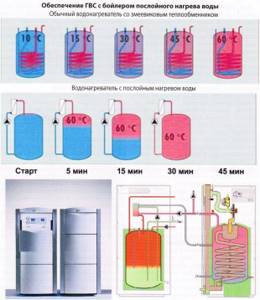
If we are talking about a private house, then designers often multiply each water point by 10 and get the maximum water flow in the house (with five points the flow will be 50 liters). But if the client saved money and insisted on purchasing a 24-kilowatt boiler with a water output of up to 12 liters per minute, then even with two water collection points this device will not be enough for him.
People often think that the boiler produces boiling water at the outlet, and if 12 liters of boiling water are diluted, you can get 25-30 liters of water at a comfortable temperature. But that's not true. A 24 kW double-circuit boiler produces water with a temperature difference of 35 ° C (10 degrees at the inlet, 45 at the outlet). And if you want to get 65°C at the output, the boiler will produce only 6 liters out of the declared 12 (despite the fact that the calculation for one tap is 10 liters). Therefore, it is pointless to buy a double-circuit boiler and try to use it to heat the house, fill a 300-liter Jacuzzi, and “pull” water into the bathhouse. A paradox arises: it would seem that there was money for a jacuzzi, but they were spared the money to buy a boiler for heating water. As a result, the boiler prepares hot water around the clock to the detriment of heating (the DHW function is its priority), its service life is reduced, there is not enough hot water, the house is cold, and a dissatisfied consumer blames the device for everything.
Error six. Refusal of control valves for radiators. Incorrect installation of ZRR
Taps, valves, Mayevsky taps, safety valves are needed to ensure the safe operation of the entire heating system; their installation cannot be neglected.
Important ! Thermal heads, which are installed on radiators to regulate the temperature in the room, are not always needed. For example, a solid fuel boiler may boil if the thermal valves shut off the coolant supply when the set temperature is reached. In general, in a small private house it is often easier to regulate the temperature on the boiler itself, without installing thermal heads on each radiator.
Selection of heating system diagrams
There are standard thermal circuits (two-pipe and single-pipe, closed and open, with natural and forced circulation), but in each case you should start from the calculation. Most often, installers use the circuit that is easiest for them to assemble. But different houses have their own characteristics - a colder room here, a more remote one there. And if the client does not express any special wishes, then instead of considering different options with the customer, they install the simplest circuit, and then, as problems arise, they begin to solve them.
And if the customer, having listened to his neighbor, for whom “everything works,” also wants to save money, the boiler will again become a hostage in this situation. Then it turns out that you would like to control the operation of the boiler from home, and not have to run to the boiler room every time, that the radiators in the back room do not heat up, the floor needs to be warm, and you could save on gas by installing outdoor and indoor sensors. All wishes must be expressed to the installer in advance so that he can apply a scheme individual for each specific case.
If the house is small, one-story, with a total area of about 100 m2 and, apart from radiators, there are no other devices in the system (for example, heated floors), then you can opt for a single-pipe heating system. It is easy to install, has a shorter overall length of pipelines and, as a result, a lower cost estimate, and evenly distributes the pressure drop at the energy extraction points. If the house has several floors with many rooms and different heating devices are used, then a single-pipe scheme is not suitable. In it, all radiators are connected in series, that is, the return of the previous radiator is connected to the supply of the next one. In this regard, the devices that are the first in the chain to the boiler will always have a higher temperature than the next ones, which means that the farthest room will be cold. Another “minus” is that the scheme is almost impossible to “extend” in the future. Also, during assembly, special requirements for the diameters of the main pipeline must be observed.
The most common today is a two-pipe system, when one pipe supplies coolant to heating devices, and the second collects waste water from them and delivers it to the boiler. It is most often used in private houses of small and medium size. Among its advantages is the use of a small number of pipelines of fairly small diameters. The scheme allows you to obtain a well-balanced and efficient heating system. The coolant consumption here depends on how many heating devices are currently turned on and at what power. If all radiators are closed, there will be no circulation and the boiler will lose power. In a single-pipe circuit, where radiators are connected in series, heated water must circulate constantly, even when the system is idle.
The two-pipe system is much more variable. It can be done with both top and bottom coolant supply. And various wiring diagrams make it possible to take into account the features of the building layout as much as possible. But we must remember that with this system design, more flow passes through the nearest radiators, which threatens the occurrence of noise effects and pyroelectric shocks. This is a “minus” of this heating system.
In a parallel circuit, each radiator is independently connected to the collector with its own pipeline. The advantage of this scheme is easy balancing, and also the fact that any actions to balance one radiator have virtually no effect on the rest of the system. The disadvantage is the high consumption of pipes and fittings. naturally affects the cost.
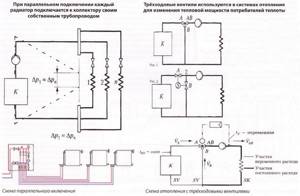
Circuit using three-way valves. It is used in heating systems to change the thermal power of the so-called heat consumers. Below on the page is a diagram of the connection of the valve (Fig. 1) and an equivalent diagram of the operation of the mixer in the form of two straight-through valves (Fig. 2). It should be taken into account that the change in the cross section of the regulated input A occurs completely depending on the change in the cross section of the regulated input B. That is, the closure of section A leads to an adequate opening of section B. Using this diagram as an example, you can see that the temperature B at the boiler outlet (tkv) is maintained constant and the desired flow temperature is achieved due to the fact that. by changing the position of the valve stem, they change the ratio of the flow rate VA, which has a boiler temperature, to the flow rate VB with a reduced temperature of the coolant from the return line.
The three-way valve operates in a wide range of regulation; the “minus” here is the complex initial adjustment.
Advantages and disadvantages
| Two-pipe heating | Single pipe heating | |
| Complexity of design and installation | Complex design and connection scheme. | Easier and simpler. Less time is spent on work. |
| It is easy to eliminate defects made at the design stage. | The difficulty is in calculating the thermal and hydraulic parameters of the network, as well as eliminating errors made during the development of the project. | |
| Restrictions on the number of floors of buildings | No. | No. |
| Contour length restrictions | There are no restrictions on the length of the contour. It is possible to insert additional batteries into an already assembled line. | The number of radiators on one riser is limited. |
| Material consumption | Double pipe flow. | Installing only one line allows you to save on the amount of pipe material. |
| Despite the increased consumption of pipe material, in general the costs are not much higher than an alternative single-pipe complex. The 2-pipe system uses smaller diameter pipes, which are much cheaper. | ||
| Automatic system balancing | Possibility of installing a thermostatic head on each radiator to maintain a constant temperature of the coolant. | Installation of a special bypass with a needle or three-way valve on each battery. |
| Compared to a thermostatic head, the cost of a bypass is at least 5 times higher. This negates all budget savings from installing single-pipe heating. | ||
| Possibility of radiator repair without stopping the entire heating system | All network elements operate independently of each other. Installation of ball valves at the inlet and outlet of each heating device allows for repair work to be carried out while the heating is running. | Since all elements of the system are interconnected, a malfunction of one of its sections leads to blocking of the entire circuit. |
| Uniform heating of heating devices | The flow of water into the radiators directly from the boiler ensures a uniform temperature throughout the entire circuit. | The passage of water sequentially through all the batteries leads to the fact that the maximum temperature is concentrated on the first radiator in the network, each subsequent one heats up less and less. This is the reason for the high heat loss coefficient. |
Summarize:
- firstly, a 2-pipe system is actually not much more expensive than a single-circuit system.
- secondly, it minimizes heat loss during operation.
- thirdly, the two-pipe concept allows significant savings in water and energy in the future.

